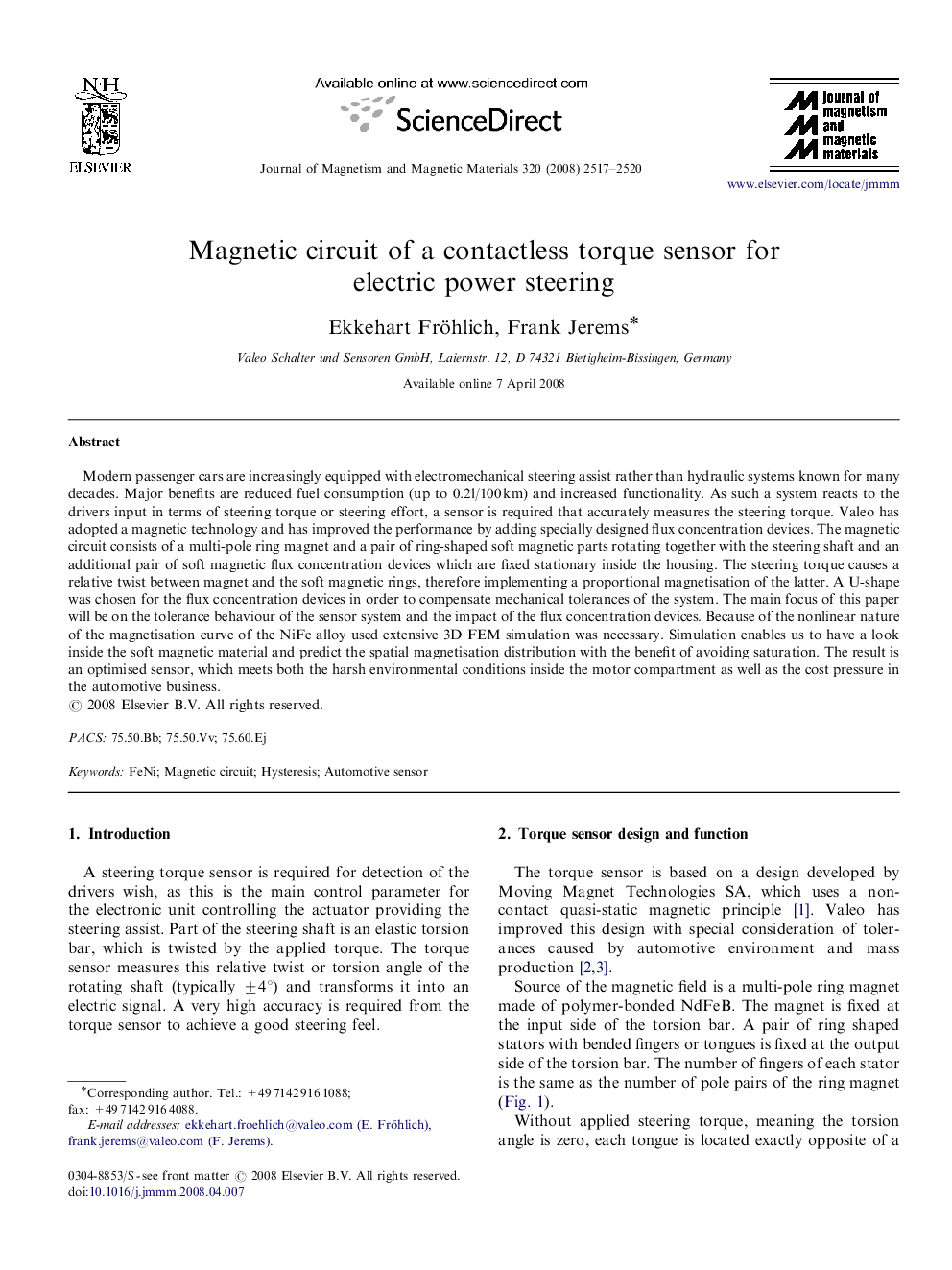| Article ID | Journal | Published Year | Pages | File Type |
|---|---|---|---|---|
| 1803510 | Journal of Magnetism and Magnetic Materials | 2008 | 4 Pages |
Modern passenger cars are increasingly equipped with electromechanical steering assist rather than hydraulic systems known for many decades. Major benefits are reduced fuel consumption (up to 0.2l/100 km) and increased functionality. As such a system reacts to the drivers input in terms of steering torque or steering effort, a sensor is required that accurately measures the steering torque. Valeo has adopted a magnetic technology and has improved the performance by adding specially designed flux concentration devices. The magnetic circuit consists of a multi-pole ring magnet and a pair of ring-shaped soft magnetic parts rotating together with the steering shaft and an additional pair of soft magnetic flux concentration devices which are fixed stationary inside the housing. The steering torque causes a relative twist between magnet and the soft magnetic rings, therefore implementing a proportional magnetisation of the latter. A U-shape was chosen for the flux concentration devices in order to compensate mechanical tolerances of the system. The main focus of this paper will be on the tolerance behaviour of the sensor system and the impact of the flux concentration devices. Because of the nonlinear nature of the magnetisation curve of the NiFe alloy used extensive 3D FEM simulation was necessary. Simulation enables us to have a look inside the soft magnetic material and predict the spatial magnetisation distribution with the benefit of avoiding saturation. The result is an optimised sensor, which meets both the harsh environmental conditions inside the motor compartment as well as the cost pressure in the automotive business.
